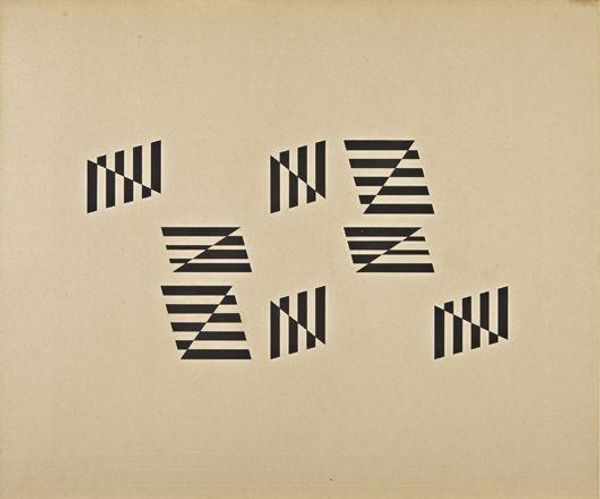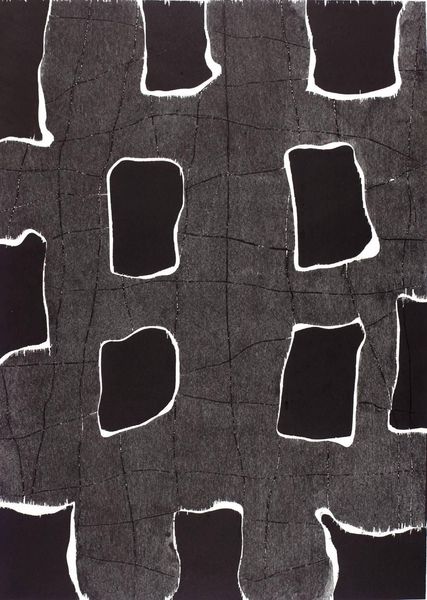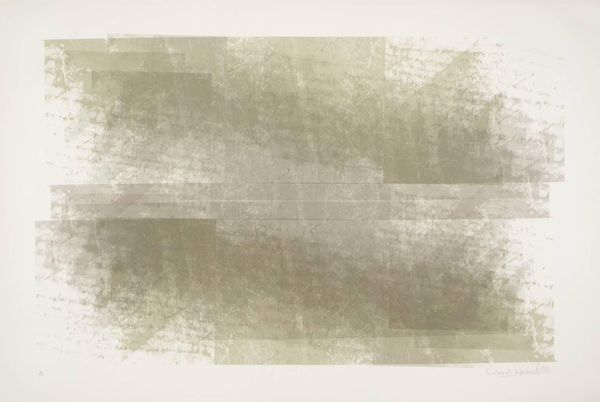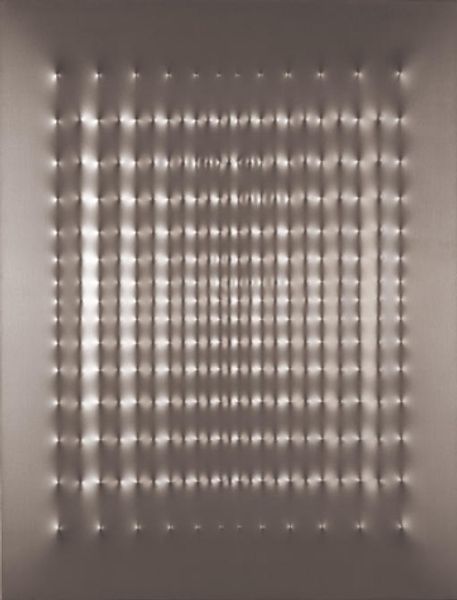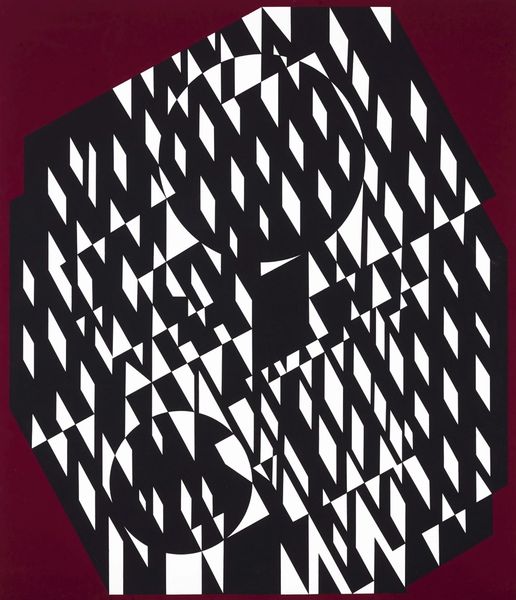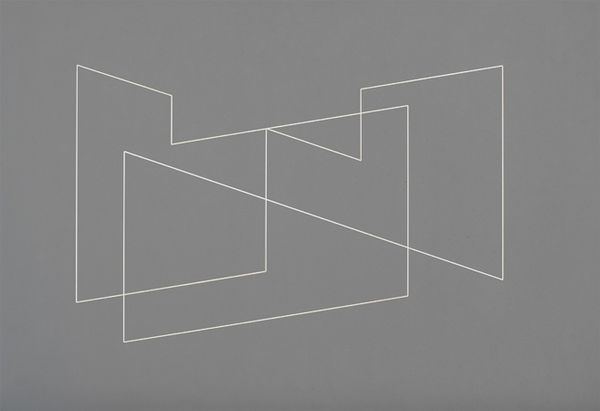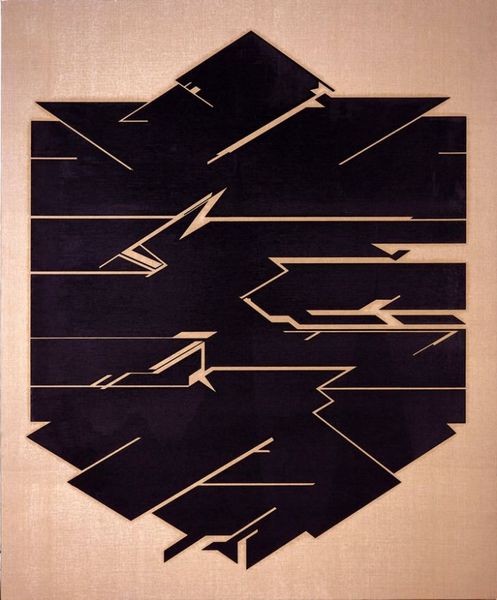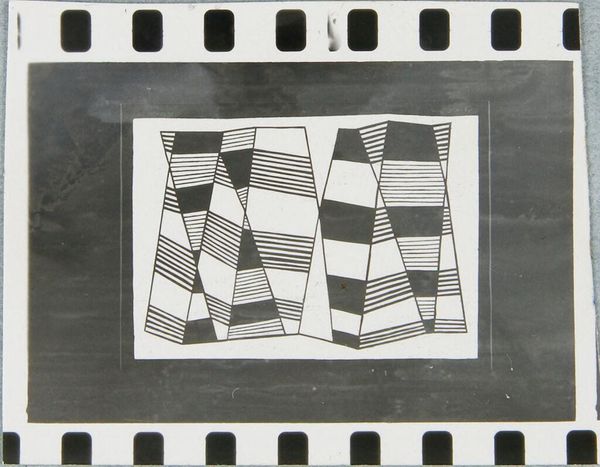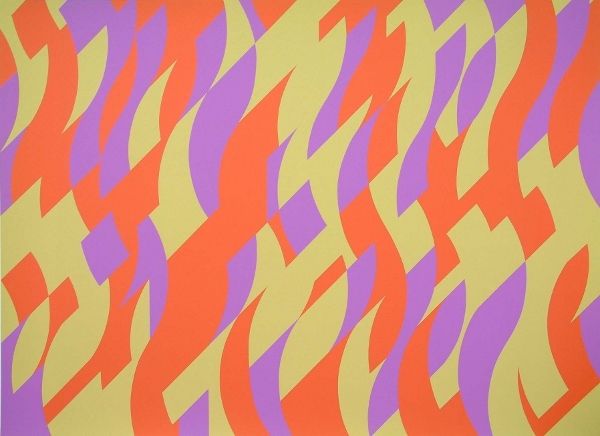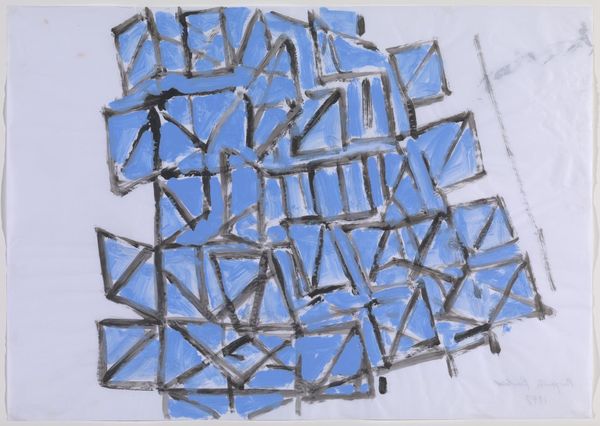
#
op-art
#
neo-concrete
#
op art
#
geometric
#
art-informel
#
geometric-abstraction
#
abstraction
Copyright: Helio Oiticica,Fair Use
Editor: So, here we have Helio Oiticica's "Metaesquema" from 1957. It’s an Op Art piece with geometric figures in black on a tan background. I find the arrangement strangely unsettling, almost like these shapes are trying to communicate some coded message. What's your read on this work? Curator: Well, in the context of 1950s Brazil, geometric abstraction like this wasn't just about aesthetics. Oiticica was part of a broader movement reacting against the emotional intensity of Art Informel. They were looking for a new visual language, one that reflected Brazil’s aspirations for modernity and industrial progress. These "coded messages," as you call them, are attempts to create a universal language, detached from subjective emotion. Do you see any traces of that "detachment"? Editor: I guess I do see that detachment a bit now. They are so uniform and cold, and almost sterile, which must've seemed progressive at the time, since Brazil was rapidly developing. But doesn't it also run the risk of being, well, soulless? Curator: Precisely. And that's the fascinating tension! On the one hand, you have this desire to embrace modernity, to create art that's 'useful' and 'objective.' On the other hand, there's a real risk of dehumanization, of losing the human element altogether. So, it reflects social anxieties too. How does this artwork inform or relate to socio-political sentiments of the time? Editor: I didn't think about it like that. Seeing it in this cultural context shows how Oiticica reflected his reality within a minimalist and geometric form. Thanks, it makes more sense now. Curator: Exactly. Art always reflects socio-political values and anxieties in some shape or form, which are very vital to its understanding. A useful framework.
Comments
No comments
Be the first to comment and join the conversation on the ultimate creative platform.
